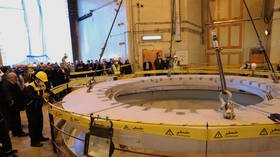Covid-19 crisis could be the turning point for green energy, with the right investment
This pandemic may be Donald Trump’s chance to fulfill his promise to rebuild US infrastructure, while also leveling the energy field for renewables. Trillions are needed but nothing as far-reaching as a Green New Deal will result.
The irony, of course, is that the president has long dismissed environmental concerns as impediments to economic growth. At the same time, though, he has been pushing for new infrastructure investment. But the two are in fact interconnected, and proper investment can fulfill both Trump’s goals and those of the environmentalists.
The country spends surprisingly little on infrastructure — 3 percent of gross domestic product. According to the American Society of Civil Engineers, upgrades to surface transportation alone would cost $1 trillion but would have positive returns: both Trump and the Chamber of commerce have estimated a handsome payback for every dollar invested. And therein is the common ground between the two political parties: a focus on improving everything from seaports to highways to airports is a way to kill two birds with a single stone. It also means building transmission lines and even pipeline infrastructure — things that require steel production and the use of metallurgical coal. And there is nothing wrong with Democrats exacting concessions such as improved emissions or air quality standards.
“We are going to fix our inner cities and rebuild our highways, bridges, tunnels, airports, schools, hospitals,” said Trump. “We’re going to rebuild our infrastructure, which will become, by the way, second to none. And we will put millions of our people to work as we rebuild it.”
How is all this green? Study-after-study has examined the need for more transmission wires to move renewable energy from the rural areas where it is generated into the cities where it is consumed. The Wind Energy Foundation says as much as 51,000 megawatts of renewable energy could fail to reach the market by 2025 if the transmission network is not expanded.
The American Society of Civil Engineers says that at least $2 trillion in energy infrastructure is necessary to put America back on track. Its 2017 Infrastructure Report Card says that the nation can begin investing in such things as safe drinking water, surface transportation, airports, rails and public parks — not things that appeal only to ‘tree-huggers’ but those things we all use.
“Congress and the states must invest an additional $206 billion each year to prevent the economic consequences to families, business, and the economy,” the engineers’ report says.
Stark Reminder
To be sure, President Trump has said he would not use the stimulus plan to craft a Green New Deal. And the package passed over the weekend and left out any such monies for renewable energy such as an extension of the tax credits now given to wind and solar.
But it may be reasonable to assume that the Democrats agreed to return later to this matter. Beyond wind and solar, the benefits could extend to battery storage and microgrids — things to encourage the use of onsite energy to avoid massive brownouts during hurricanes, and pandemics. It may involve new energy efficiency standards for buildings and extended tax credits for electric vehicles.
“Economic recovery packages must serve to accelerate the transition,” says the International Renewable Energy Agency’s (IRENA) Director General, Francesco La Camera, in an interview. “Legislation to promote grid interconnections, energy system flexibility and cleantech innovation, while redirecting perverse fossil fuel subsidies towards clean energy technologies including green hydrogen, may be steps in the right direction.”
The global health pandemic is a stark reminder that the international community needs to think about the unthinkable. If a disease can spread with millions getting sick and thousands of those dying, then it is realistic to assume that global warming could have the same deleterious effect — that millions could be displaced and livelihoods torn asunder.
The funny thing is that the coronavirus may be the antidote to President Trump’s climate denialism. That is, investments in clean energy – let’s call them ‘infrastructure’ – would fulfill his goal of creating world-class highways and byways. And the greenies are in full support of that.
Bloomberg New Energy Finance, for example, now says that the global demand for solar-powered electricity will fall by 16 percent in 2020: it had estimated 121-152 gigawatts of new capacity – a forecast that has been downgraded to 108-143 gigawatts. The American Wind Energy Association says that millions in investment is now at risk. And that means jobs, too.
“The pandemic shows that delayed action brings significant economic consequences,” says IRENA’s La Camera. “It is critical that, while we protect jobs and livelihoods, we remain committed to the unchanged need to decarbonize our societies and meet sustainability goals. The energy transformation and acceleration of sustainable energy may address both concerns. For many reasons, now is the time to prioritize investment into sustainable energy infrastructure.”
Climate issues have gotten short shrift, given that resources are spread thin. But stimulating economies and expanding green energy programs go hand-in-hand. The good news is that the president now has a chance to realize his infrastructure expansion if he crosses the aisle and works with Democrats to let them enact policy that would mitigate carbon emissions.
The statements, views and opinions expressed in this column are solely those of the author and do not necessarily represent those of RT.














